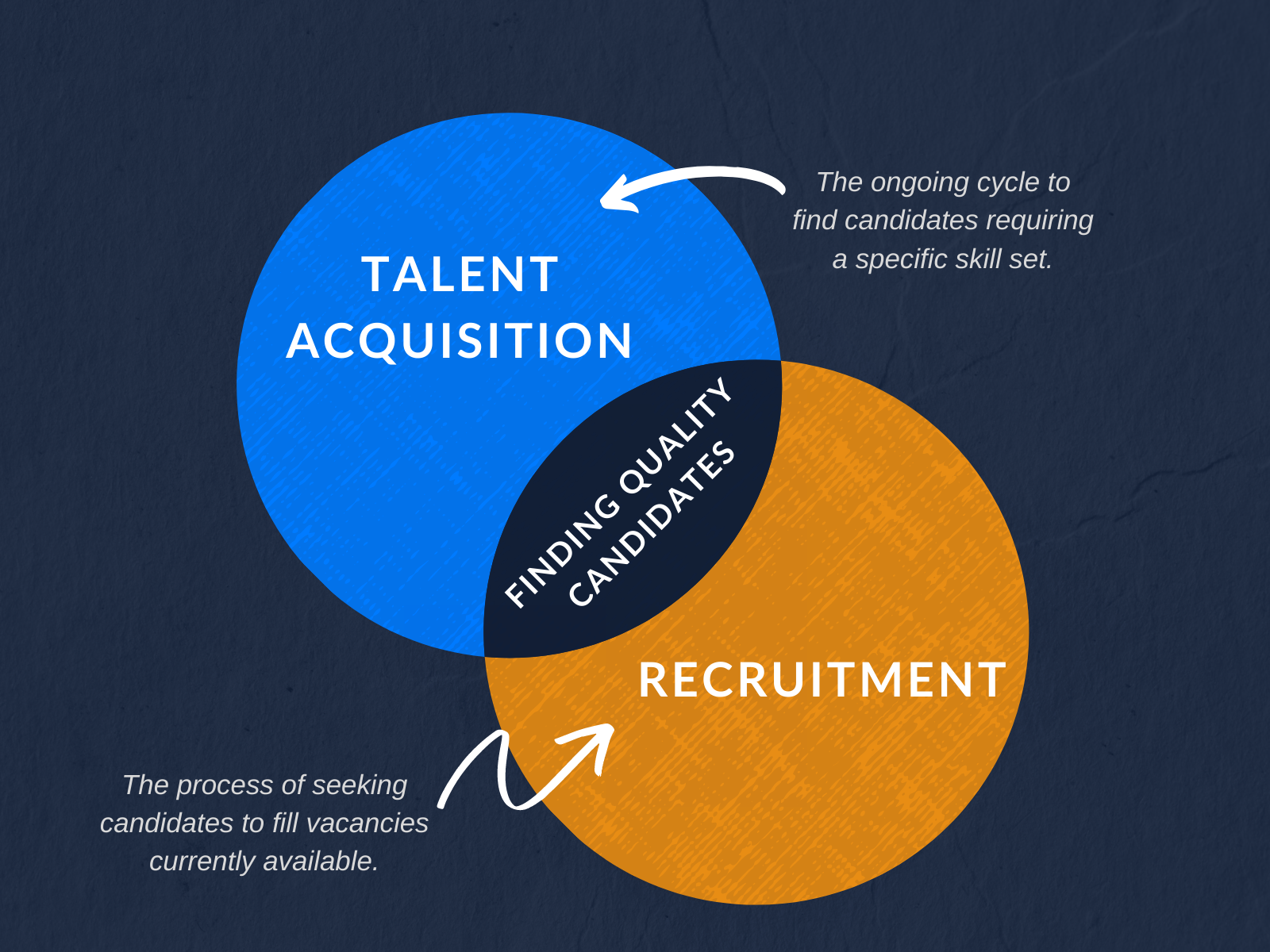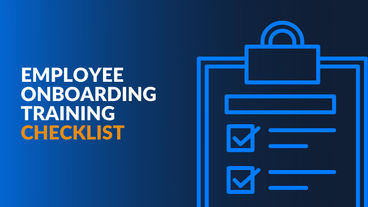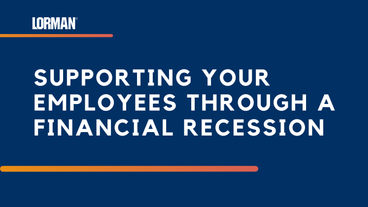
What's the Difference Between Talent Acquisition and Recruiting?
Posted on 12/14/20 By Lorman Team
Recruiting is no longer what it used to be and finding the exceptional candidate is easier said than done — especially among the challenges of a global pandemic. HR professionals have since resorted to different recruitment strategies and approaches to maneuver an ever-dynamic job market.
There are different ways to approach finding potential employees. Although the terms are often used interchangeably, talent acquisition and recruitment are distinct processes that can yield varying results.
In this interest, we'll take a closer look at both talent acquisition and recruiting to help you determine which is the best fit for your company's needs and goals.

Talent Acquisition vs. Recruiting
Knowing the difference between talent acquisition and recruitment will help you identify which approach will best match your company's goals and needs.
Have a look at our breakdowns of the key differences between the two to give you actionable insights.
What Is Talent Acquisition?
Talent acquisition (TA) is the continuous process of onboarding leaders, executives, and specialists for your company with regard to the future. TA focuses on long-term human resource goals to find best-fit candidates for positions in your company requiring a specific skill set.
In some instances, talent acquisition initiatives will seek candidates for positions that are not currently available in your company but are expected to become available in the future. This prediction is usually based on your company's succession plan and history of attrition.
Talent acquisition is an ongoing cycle of sourcing, attracting, hiring, and recruiting employees for your organization.
What is Recruiting?
Recruiting involves activities related to sourcing, screening, interviewing, selecting, assessing, and hiring. Recruitment is a linear process where HR teams seek to hire candidates for vacancies for positions currently available.
Recruiting is reactive and is more about filling vacant positions in your company. The reactive response may lead to increased costs and time in hiring or, worse, recruits who are below par.
But still, when should you be doing talent acquisition and when should you utilize recruiting strategies?
Long-Term and Short-Term Hiring Goals
One of the simplest ways to grasp the difference between talent acquisition and recruitment is to view them, respectively, as long-term planning and a short-term fix for your business's needs.
Talent acquisition is an ongoing strategy of utilizing candidates and their skills that come out of the recruitment process as an alternative to fill similar vacancies in the future. On the flip side, recruiting is specifically about filling immediate vacant positions in your company.
Here are other important factors to keep in mind:
1. Recruitment is a Subset of Talent Acquisition
Whereas talent acquisition is synonymously used with recruiting, the two are different concepts, with one being a component aspect of the other.
Talent acquisition is a general term and is made up of several subsets, including:
- Recruiting
- Employment Branding
- Candidate Relationship Management
- Acquisition planning and strategy
- Workforce segmentation
- Metrics and Analytics
Recruiting is just a subset of talent acquisition and involves screening, sourcing, interviewing, assessing, and hiring.
2. An Ongoing Cycle vs. a Linear Process
Talent acquisition is a continuous cycle and focuses on employment branding, relationship building, and networking with possible candidate communities. It is more focused on building and enhancing a sustainable talent pool and chain for your organization.
Recruitment is a rigorous linear process where you source candidates for vacant positions within your company.
3. Talent Acquisition Specialist vs. Recruitment Specialist
Another difference between the two processes is the recruiter's perspective on the candidates.
A talent acquisition recruiter generally looks beyond candidates' CVs and seeks to determine the talent relevant to the company that the prospects possess.
Recruitment specialists seek something else altogether. Relevant educational background and industry experience primarily determine whether a candidate is qualified for a position.

Should You Acquire Talent or Should You Recruit?
Talent acquisition is strategic while recruitment is tactical, and you can consider using either approach depending on your business's situation.
When to Recruit
Put simply, you need to recruit whenever a position in your company is vacant. It is about ensuring that your organization has enough capacity to operate efficiently.
Recruiting also requires that you have a clear idea of the kind of person you are looking for and the skills you want them to bring on board.
When to Acquire Talent
Talent acquisition is an in-depth process and is the way to go if you are looking at your company's big picture and how to grow and transform in the years to come.
You may want to develop a good talent acquisition strategy for your organization, especially if it requires a specific skill-set and expertise unique to your scope of operations.
Companies in industries with significant skills or workforce shortages should consider adopting talent acquisition to address the shortages while achieving their growth and development goals.
Talent Acquisition, Recruiting, and Beyond
Both talent acquisition and recruiting play important roles in finding top-quality candidates for your organization.
At times, you'll find it best to implement a strong recruiting process in order to quickly and efficiently fill vacancies. However, creating a solid talent acquisition program within your company will help you strategically find candidates who will help you reach long-term goals.
Finding the perfect person for a job is just one piece of the puzzle. Make sure you have sufficient employee onboarding and skills training programs to support the long-term success of your workforce.
Related Articles
What should be included on a new employee onboarding checklist? This sample onboarding checklist below will help you keep track of the training your new employee needs upon starting.
Giving appropriate support to your workforce during an economic downturn can help alleviate some stress and anxiety while contributing to a strong company culture.
Is an HR Certification Worth It? Discussing the Value of Continuing Education [Interview]
Vanessa Collins discusses how earning the PHR certification helped advance her career in human resources.


![Is an HR Certification Worth It? Discussing the Value of Continuing Education [Interview] Is an HR Certification Worth It? Discussing the Value of Continuing Education [Interview]](https://image.lorman.com/article/blog/tr:w-368,h-207/106_is%20an%20HR%20Certification%20Worth%20It%20-%20value%20of%20continuing%20education.png)